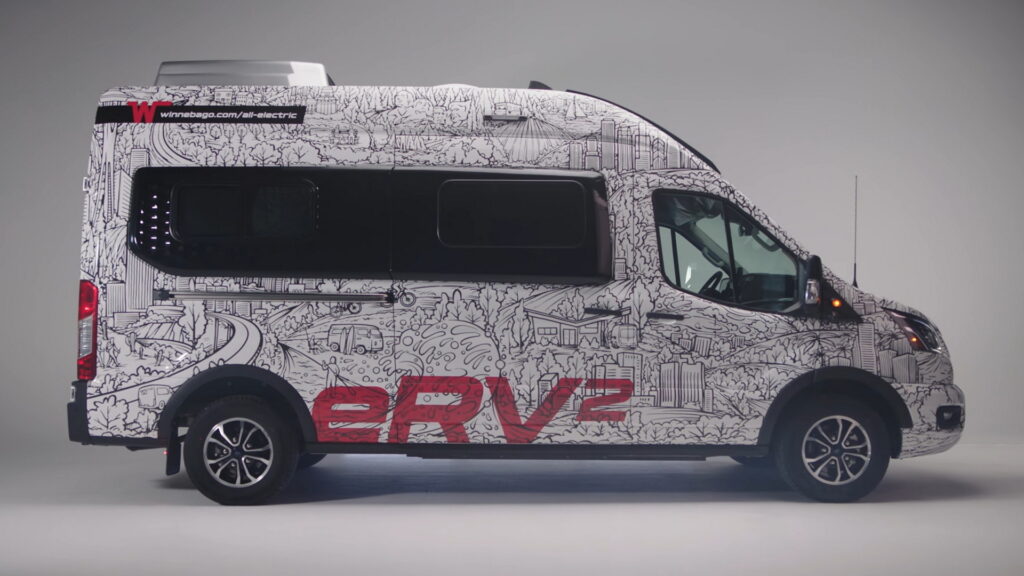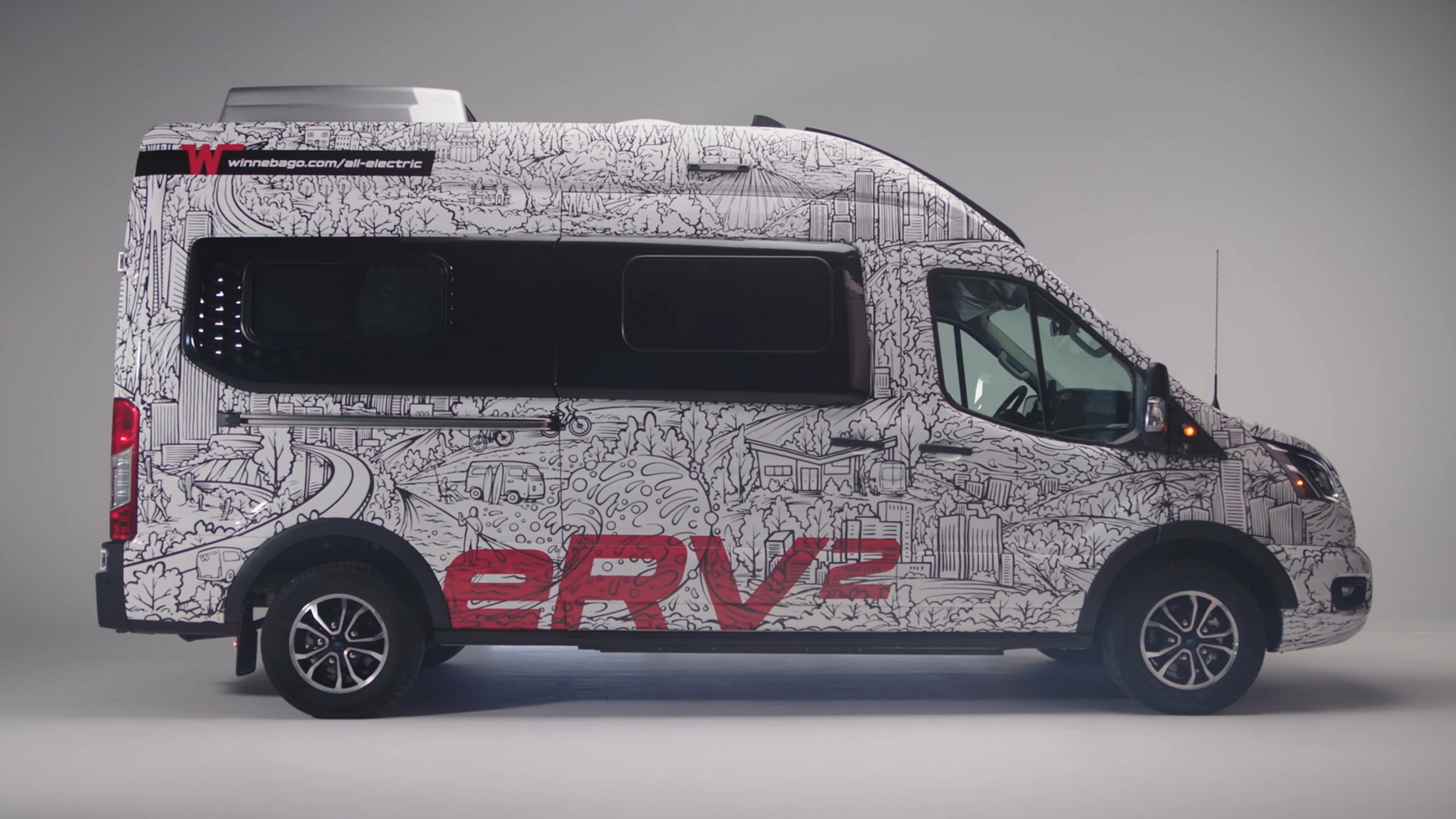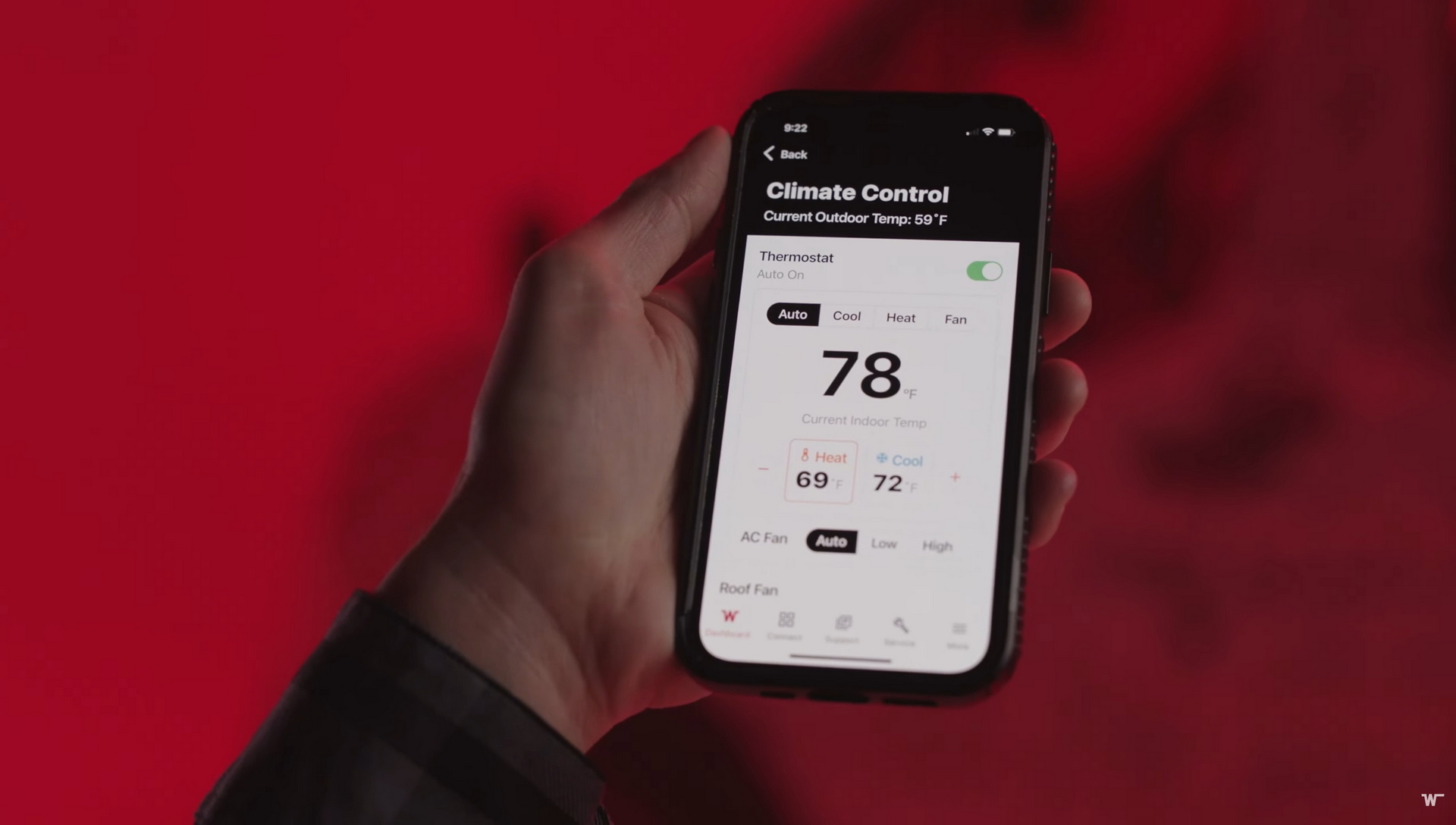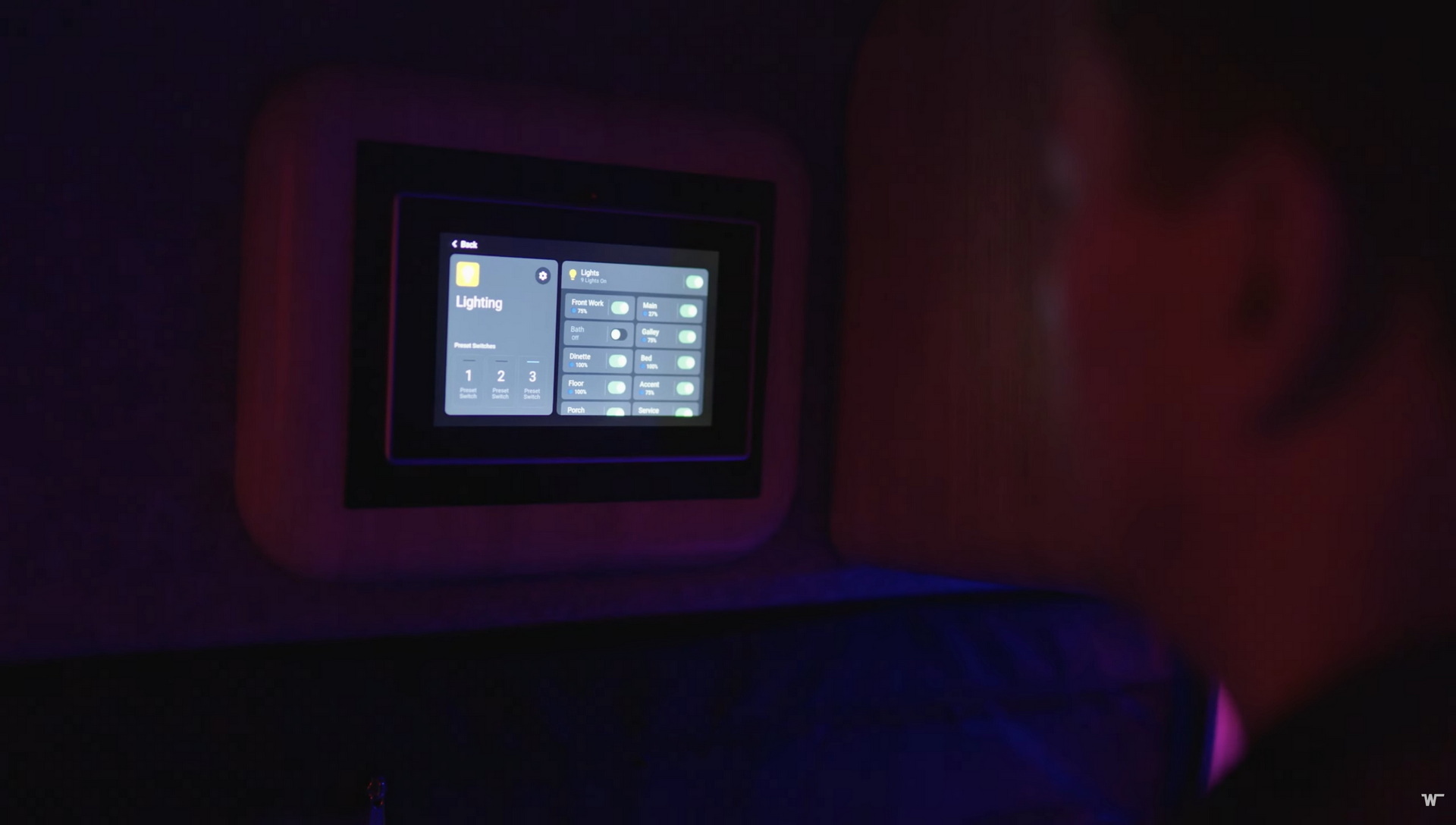Winnebago says that it will soon sell its first-ever production RV, and it has provided us with a glimpse of what that will look like. The eRV2 prototype is based on a Ford e-Transit chassis, with a number of modifications to help it go off grid.
From the Ford factory, the chassis has a range of 108 miles (174 km), which is well suited to this pilot program, according to Winnebago. It says, though, that it’s looking at ways to extend that range even farther, and plans to incorporate those advancements into the production version.
For the cabin, meanwhile, it has partnered with Lithionics Battery to create its own IonBlade batteries. These will work on a 48v system and will have more than 15,000 usable watt-hours of performance. Their unique shape, meanwhile, helps them lay flat, maximizing cabin space.
Read: The Winnebago e-RV Concept Previews The Electric Motorhome Of The Future
In addition, the eRV2 will be equipped with 900 watts of solar capacity to help campers stay out for as long as possible. Taken all together, Winnebago claims that the vehicle will be able to boondock (that is, to camp with no access to power, water, or sewage) for up to seven days at a time.
The eRV2 isn’t all about electric performance, though. In addition to those stats, the camper features a range of recycled materials throughout the interior. The floor, the removable mats, the mattress, and the trim around the window frames on this concept are made of repurposed materials.
The driver and passenger seat covers, meanwhile, are made of renewable plant-based materials, the countertops are made of a biodegradable acrylic, and you can even reduce the amount of light you emit, thanks to the broad color-spectrum lighting that allows campers to choose red lighting inside the cabin, which produces less light pollution and has fewer negative effects on the local flora and fauna.
With modern design, a high-speed Wi-Fi router, and an infotainment system that allows owners to monitor and control their energy usage, the eRV2 is a tech-lover’s dream, too. Winnebago says that it is currently testing the concept in the field, though it has not offered a timeline on when a production version could start arriving in showrooms.
“Our primary goal in building the eRV2 was to help people comfortably explore the world around them with less environmental impact,” said Huw Bower, president of the Winnebago brand. “The user experience was at the heart of this prototype’s development, through the early days of market research and even now as it goes through field testing. The eRV2 embodies our pioneering legacy, representing not only an achievement in design, innovation and sustainability, but also our commitment to continuously evolve with the changing needs of consumers and the world we share.”








